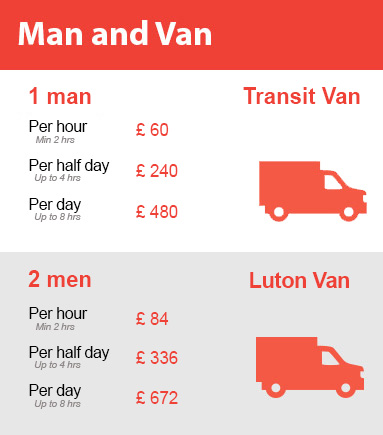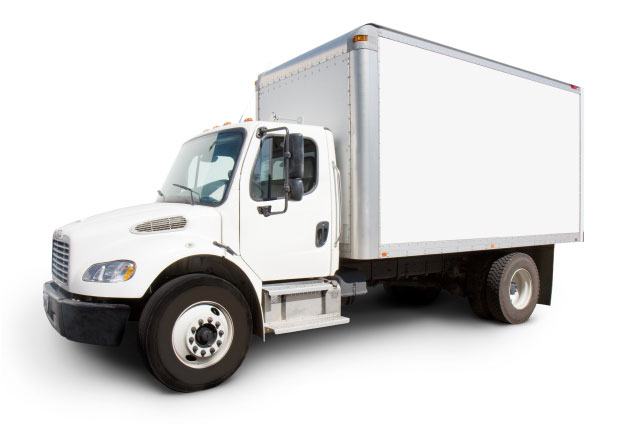Unlock Solo Lifting Secrets: How to Safely Handle Heavy Objects
Posted on 21/06/2025
Unlock Solo Lifting Secrets: How to Safely Handle Heavy Objects
Solo lifting is a skill set everyone should master, whether moving furniture, handling hardware at work, or simply shifting boxes in your garage. Unfortunately, incorrect techniques can lead to severe injuries and long-term health concerns. This comprehensive guide unveils the secrets behind how to safely lift heavy objects alone, so you can confidently tackle your next big move--without putting your body at risk.
Understanding the Risks: Why Lifting Heavy Objects Alone Can Be Dangerous
Moving heavy items single-handedly is common in both domestic and professional settings. However, improper handling exposes you to many injuries, such as strains, sprains, herniated discs, and chronic back pain. Studies reveal that manual lifting is a leading cause of workplace injuries worldwide.
- Low back pain affects more than 540 million people globally.
- Improper solo lifting techniques significantly increase injury risk.
- Repetitive lifting without rest can lead to cumulative trauma disorders.
Understanding these risks is the first step to unlocking the secrets of safe solo lifting. Awareness lays the groundwork for building strong, efficient, and injury-free lifting habits.

Preparation: The Foundation of Safe Solo Lifting
1. Assess the Load Before You Lift
Before touching a heavy object, stop and evaluate its weight, shape, and stability. If it's too heavy, awkward, or unbalanced, reconsider solo lifting.
- Test the weight by tilting it slightly.
- Check for sharp edges or slippery surfaces.
- Look for handles, straps, or lifting points that offer better grip.
Pro tip: Never exceed your capability. Ask yourself if lifting the object alone is absolutely necessary.
2. Clear Your Path
Inspect the route you'll take. Remove tripping hazards, secure loose rugs, and ensure good lighting. Have your destination ready--whether it's a table, truck, or shelf--so you don't need to search for where to set the object down.
3. Gear Up: Proper Clothing & Equipment for Solo Lifters
What you wear matters. Opt for:
- Closed-toe, non-slip shoes
- Gloves for grip and protection
- Supportive clothing (avoid loose garments)
- Back support belts (when essential)
Consider using tools like dollies, hand trucks, moving straps, or lifting harnesses to ease the load and minimize the risk of strain.
Solo Lifting Secrets: Proven Techniques for Moving Heavy Objects Alone
1. Master Proper Body Mechanics
Maintaining correct form is the pillar of safe solo lifting. Poor posture places undue strain on your muscles, ligaments, and spine. Follow these essential steps:
- Stand close to the object, feet shoulder-width apart for a stable base.
- Bend at your knees and hips, not your waist.
- Keep your back straight and head up--look forward, not down.
- Tighten your core muscles before lifting.
- Use your legs to raise the load, keeping the object as close to your body as possible.
- Do not twist your torso while lifting. To turn, move your feet instead.
- Set the object down by reversing these steps, bending at the knees and maintaining straight posture.
Avoid the classic mistake: Never jerk the object or try to catch it if it starts to slip. Slow and steady wins the race.
2. Leverage Technology: Manual Handling Aids
When it comes to solo heavy lifting, devices are your best friend. Here are some essential tools:
- Furniture sliders: Reduce floor friction and enable smooth movement.
- Hand trucks & dollies: Perfect for appliances and stacks of boxes.
- Lifting straps/harnesses: Distribute weight more evenly--ideal for odd-shaped objects.
- Forearm forklifts: These innovative straps convert your arms into levers for improved lifting power.
Deploying the right equipment transforms overwhelming tasks into manageable ones, all without sacrificing safety.
3. Smart Techniques for Navigating Stairs and Tight Spaces
Moving heavy objects alone is more challenging on stairs or in narrow hallways. Here are some expert tips:
- Divide the load when possible--carry lighter portions in multiple trips.
- Use stair climbing dollies for bulkier items.
- Always keep the weight below chest height for balance.
- Take breaks at landings or flat spots.
- If you must twist, pivot slowly with your feet (never your back).
A measured approach keeps you safe and reduces the risk of property damage.
Best Practices for Long-Term Health: Preventing Injury When Lifting Alone
1. Strengthen Your Body for Lifting Tasks
Preparation goes beyond just knowing the techniques. Building overall core strength and flexibility is the secret weapon for safe solo lifting:
- Incorporate planks, bridges, and squats into your workout routine.
- Practice flexibility with yoga or targeted stretching.
- Warm up before lifting to prepare your muscles.
The stronger and more limber your body, the better it can handle challenges without strain.
2. Listen To Your Body: Early Warning Signs
No two loads--or bodies--are alike. If you feel pain, tingling, or unusual fatigue, stop immediately. It's better to make two trips or ask for help than to risk a debilitating injury. Don't ignore persistent aches; pay attention and allow yourself ample recovery time.
3. Break Large Loads Into Smaller, Manageable Units
One of the best-kept secrets in solo heavy lifting is load management. Whenever feasible:
- Empty drawers, cabinets, and boxes beforehand.
- Disassemble furniture for ease of movement.
- Make more trips with lighter loads.
Reducing weight ensures better control and minimizes risk.
Common Mistakes When Lifting Heavy Objects Alone (and How to Avoid Them)
- Relying solely on back strength: Always use your legs and core.
- Neglecting warm-up routines: Stretch and loosen muscles first.
- Wearing unsafe clothing/shoes: Stick to fitted attire and supportive footwear.
- Forgoing mechanical aids: Even with moderate loads, leverage dollies and straps.
- Rushing the process: Plan ahead and move at a controlled pace for safe solo lifting success.
Bonus Section: Advanced Lifting Tips for the Ambitious Solo Mover
1. Use the "Tripod Lift" for Odd Shapes
When confronted with a bulky or round object (like a heavy pot or barrel), use one knee as a support point:
- Kneel with one knee alongside the load.
- Grip and roll the item onto your elevated knee.
- From there, rise using your legs to bring the item close to your torso, then stand upright.
2. The Power of Counterweights and Pivots
For extremely heavy items that can't be lifted, consider:
- Sliding them with a blanket or cardboard underneath.
- Using a crowbar and wooden block as a lever to raise one side and insert sliders.
- Pivoting the object around corners rather than lifting and carrying.
These methods use physics, not sheer force, for efficient moves.
3. The Buddy System--When Solo Lifting Isn't Worth the Risk
Some loads simply aren't meant for solo lifting. In these cases:
- Contact a friend or professional mover.
- Don't risk your health over a single lift.
- The cost of help is less than medical bills from an injury.
Knowing your limits is the wisest lifting secret of all.
Essential Safety Checklist for Solo Lifting Heavy Objects
- Assess the load and environment first.
- Gear up--wear proper clothing and safety devices.
- Use tools to assist, like dollies or straps.
- Maintain correct body posture at all times.
- Take breaks when needed and monitor for signs of strain.

Frequently Asked Questions About Safe Solo Lifting
How heavy is too heavy to lift by yourself?
This varies by individual, but most experts recommend not lifting solo more than 20-25% of your body weight. For loads above 50 lbs (23 kg), especially those without handles or with awkward shapes, consider getting assistance or mechanical help.
Are back support belts reliable for solo lifting?
While back belts can remind you to keep proper posture, they're not a substitute for proper technique or strength training. Relying on them exclusively can give a false sense of security.
What if I feel pain while lifting alone?
Stop immediately. Sharp or persistent pain signals overexertion or injury. Always err on the side of caution. If discomfort continues, consult a healthcare professional.
Conclusion: Turn Solo Lifting Into a Safe, Stress-Free Task
Whether moving house, rearranging your workspace, or handling day-to-day heavy lifting, understanding and applying the right solo lifting secrets is essential. Preparation, proper technique, appropriate equipment, and body awareness are your best defenses against injury. The next time you're faced with moving a heavy object alone, use these expert insights to ensure a safe, efficient, and stress-free lifting experience.
Remember: Unlocking solo lifting secrets is not about sheer strength--it's about smart strategy, smart tools, and putting your health first.
Ready to tackle your next heavy-lifting challenge? Follow these guidelines every time, and keep both your belongings and your body safe!





